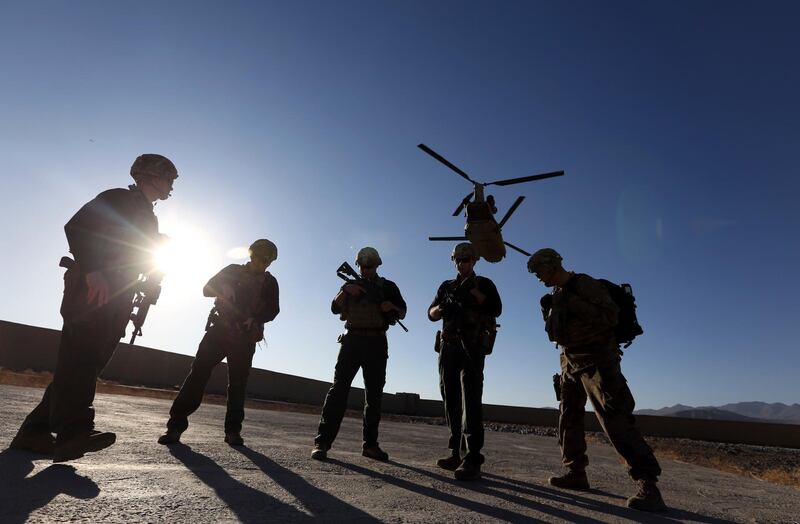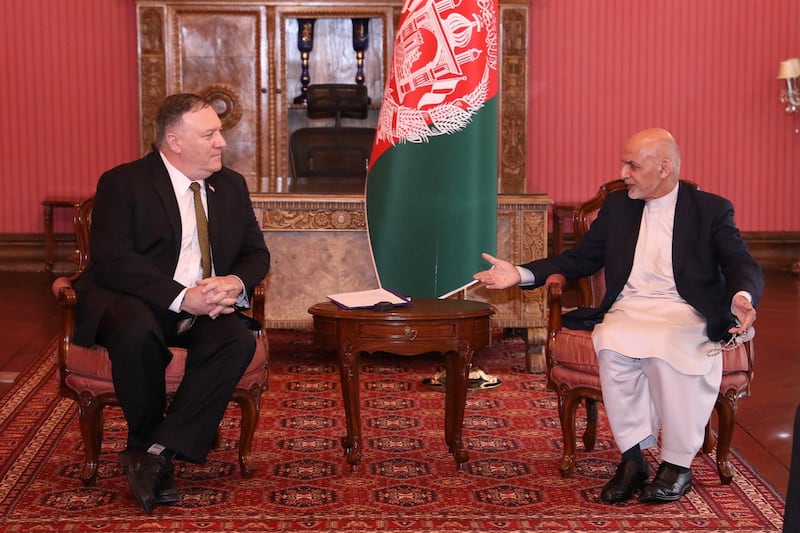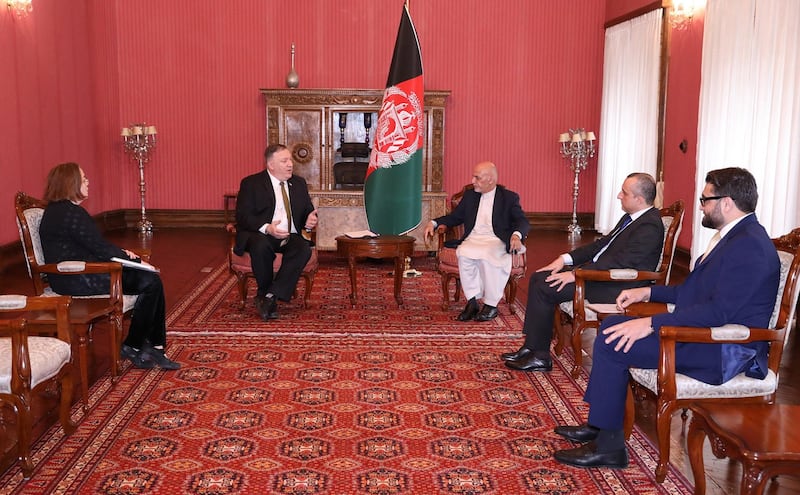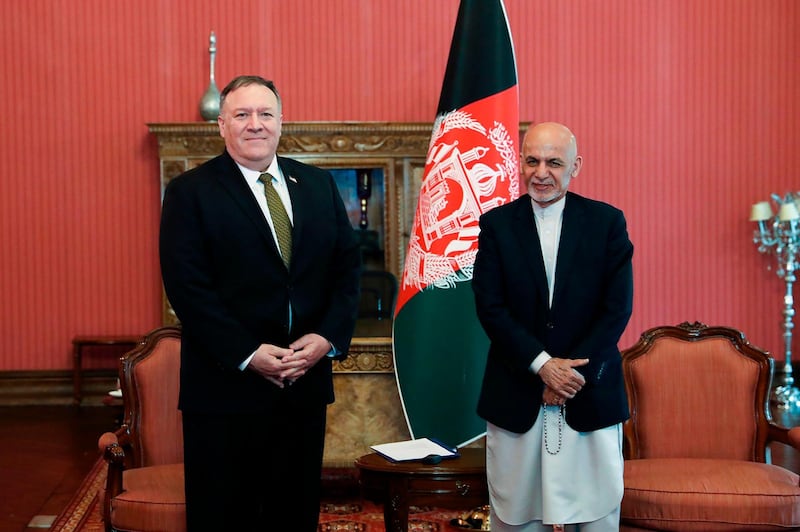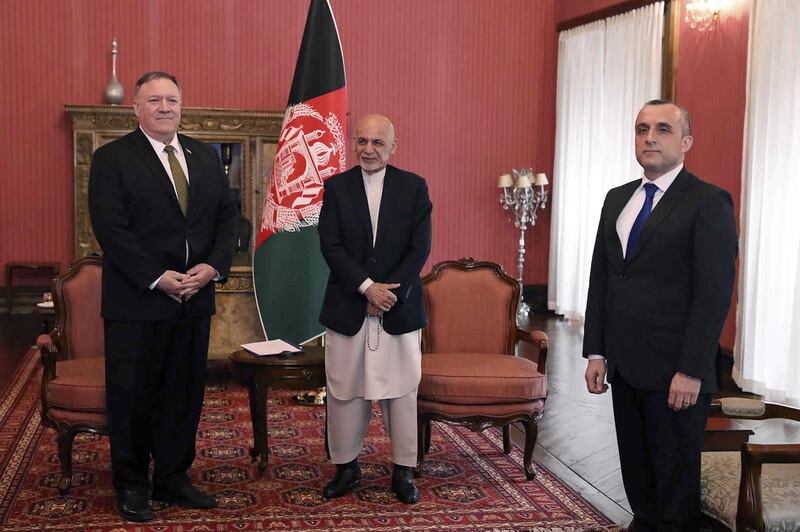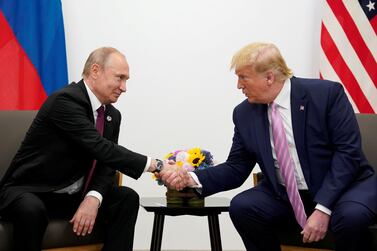US Secretary of State Mike Pompeo called the Taliban’s chief negotiator, their spokesman said on Tuesday, amid a controversy in Washington over when President Donald Trump was told about US intelligence claims that Russia was paying the Taliban to kill US and Nato soldiers in Afghanistan.
But it was not known whether there was any mention of allegations that some Taliban militants received money to kill US and Nato soldiers in Afghanistan.
Mr Pompeo and Mullah Abdul Ghani Baradar held a video conference late on Monday in which the US official pressed the insurgents to reduce violence in Afghanistan.
They also discussed ways of advancing a peace deal signed between the US and the Taliban in February, Taliban spokesman Suhail Shaheen tweeted.
The US peace envoy, Zalmay Khalilzad, is touring the region to try to advance the deal.
He was in Uzbekistan on Tuesday and was expected in the Pakistani capital, Islamabad, later in the day or on Wednesday.
He was also to travel to Doha, Qatar, where the Taliban maintain a political office.
Mr Khalilzad is also holding video conferences with Kabul leaders rather than travelling to the Afghan capital because of the dangers of Covid-19, the US State Department said.
Afghanistan’s dilapidated health system is grappling with the pandemic, with the number of infections thought to far outstrip the official tally of more than 31,000 cases, including 733 deaths.
The implementation of the US-Taliban deal has reached a critical stage, with the Taliban and leaders in Kabul expected to hold talks on a framework for a post-war Afghanistan that would end the fighting and bring the insurgents into the country’s political arena.
The talks are expected to begin in July, if both sides abide by a promise laid out in the US-Taliban deal to release thousands of prisoners.
The agreement calls for Kabul to release 5,000 imprisoned Taliban while the insurgents would free 1,000 government and military personnel they hold captive.
But the prisoner releases have been marked by delays. Kabul has so far released 3,500 and the Taliban have freed about 700.
Mr Shaheen tweeted that Mr Pompeo and Mr Baradar discussed the “implementation of the agreement, foreign troop withdrawal, prisoner release, start of intra-Afghan dialogue and reduction in operations".
The State Department has not commented on the video conference.
Mr Baradar complained about new Afghan military checkpoints in areas under Taliban control, while Mr Pompeo said Washington wanted to see a reduction in violence, according to the tweet.
A US official said Mr Pompeo stressed in Monday night’s call that the Taliban must abide by their commitment to battle other militants operating in Afghanistan, specifically terror groups that could threaten the US or its allies, referring to ISIS.
The Taliban have denied the allegations that they were paid by Russia to kill Americans in Afghanistan.
AP has reported that Russia began paying the bounties in early 2019, even as Mr Khalilzad was trying to finalise the deal with the Taliban to end Washington’s longest war and withdraw US soldiers.
Violence in Afghanistan has continued to surge since a three-day ceasefire in May for Eid Al Fitr.
As civilian casualties rise, the Taliban and the government blame each other.
On Monday, 23 civilians were killed in an attack on a busy market in the southern province of Helmand, a Taliban heartland.
In a tweet early on Tuesday, Taliban spokesman Zabihullah Mujahid invited foreign and Afghan journalists to visit the area – which is controlled by the Taliban and has been off-limits to reporters –to independently check out claims about the attack.
The Afghan government said a powerful bomb and mortar fire by the Taliban caused the deaths.
